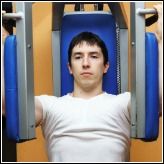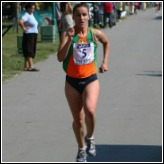A Proven Plyometric Workout
When the need for explosive strength is required, plyometric workout is fast becoming the training method of choice with coaches and athletes alike. The primary reason for this is research into plyometric training methods has been extensive and many of the benefits are not just coaching theories anymore, they are proven facts in applied coaching.
Track and field events such as the long jump, high jump and triple jump have relied heavily on plyometric training for their success over the years. In fact, I don’t know of any elite, international or regional level athlete in any jumping events who do not make plyometric workouts a principle part of their training programs.
There are however still some misconceptions and silly mistakes being made by (for the most part) well intentioned people. I would therefore advise you to browse through the other pages of this site in particular this page, or contact me to get the dos and don’ts on plyometric training.
If this subject is new to you, you should find this article beneficial. But even if you are a coach who has been working with plyometrics for a while, you should still get something out of this. In truth, it is not that hard, but that’s easy for me to say – I am working with these concepts on a daily basis.
Planning Your Plyometric Training Program
Periodization training theory states that training should evolve from general, to specific and finally into competition training. It is my belief that your plyometric training should therefore follow this principle.
You should organize your plyometric workouts into general plyometric training, specific plyometric training and if appropriate competition plyometric training.
I realize that not all athletes training to develop strength will have a defined competitive phase of training. Where this is so you would utilizing plyometric workouts only as a part of an overall power enhancement program.
In this case your plyometric training will be implemented within the power conversion phase of your training program.
Why a General Phase to Your Plyometric Training?
A lot of coaches wrongly believe (in my opinion) that plyometric workouts should only be introduced to the training program in the specific power phase of training. They site that the training method is very specific to the development of power and therefore that’s where it fits into the program.
They are not wrong, but that’s not the full story either…
First thing
It’s important that you introduce a general preparation phase into your plyometric workout as this prepares the athlete for more intensive work later on in the program. This early preparation training eases the athlete’s muscles and more importantly, their tendons and ligaments, into the process. This phase also develops important jumping endurance qualities which will support a higher quality of training later on.
Second thing
You should decide how long each phase of the training will be. For example, if your general and specific preparation periods are 12 weeks long, you might decide to allocate 4 weeks for general plyometric training and 8 weeks to the specific plyometric training phase. Or you might have an allocation of 6/6.
You would never have an allocation of 8/4 as it is in the specific phase of training where the performance benefits are enhanced and the real gains in power are made. Why would you then allocate less time to this phase of training?
Plyometric Circuit
The following is an example of a plyometric workout which can be undertaken at the beginning of the general phase of training. It is designed to bring the plyometric methodology to a wide range of movement direction. It also aims to bullet proof the athlete’s body against the potential risk of the more intensive plyometric training program to come.
For training ideas which can be undertaken in the specific phases of training, go here…
Example:
The routine consist of 12 exercises organized in groups of 4:
- Zig Zag jumps or Slalom jumps (two footed)
- Hops (right leg)
- Hops (left leg)
- Bounding/Stepping
- High skipping
- Side skipping (to the right)
- Side skipping (to the left)
- Backward bounds/steps
- Bunny jump into tuck jump
- Reactive Rebound jumps
- Bunny jumps
- Straight-legged jumps (two feet bouncing jumps)
Organization:
- The activity should be done on a surface with some give to it (for example grass or plyometric mat).
- Plyometric Circuits can be done over distances of 10 - 25 metres – 5-8 contacts (depending on the age and experience of the athlete)
- Each group of 4 exercises should be done in a continuous fashion, one after the other, followed by a recovery of about 1.5-2 minutes (if done on a playing field, walk back to the beginning).
- All 12 exercises comprise one complete set.
- A minimum of 5 minutes recovery should be taken between each set.
- From 2 to 5 sets can be undertaken in any single session.
- The effort intensity of each exercise should be 7 (where 10 represent an all out effort)
- Good technique must be executed at all times.
This is the type of training my athletes do, so give it a go and good luck.
Sign Up For The Latest Track And Field News And Improve Your Athletic Performance!
From
"A Proven Plyometric Workout" Back To "Faster,
Stronger, Better – Your Shortcut To Improved Athletic Performance"
Learn more about plyometric training







